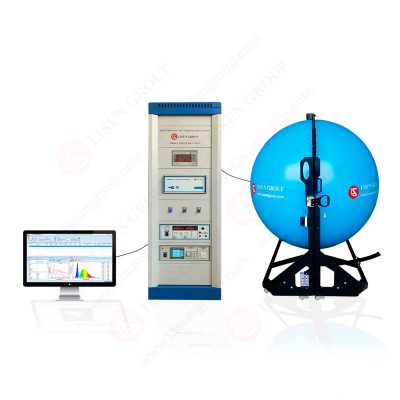

Abstract
The Spectroradiometer Integrating Sphere system has emerged as a critical tool in the photometric, colorimetric, and electrical characterization of modern lighting products, including energy-saving lamps, fluorescent lamps, HID lamps (such as high-pressure sodium and mercury lamps), cold-cathode fluorescent lamps, and LED lamps. This paper focuses on the LISUN LPCE-2 (LMS-9000C) High Precision Spectroradiometer Integrating Sphere System, exploring its technical specifications, testing capabilities, compliance with international standards, and practical applications. By integrating detailed parameter analyses and comparative tables, this study demonstrates how the system ensures precise quality assessment of lighting products, particularly for LEDs, by evaluating their optical, chromatic, and electrical properties.
1. Introduction: The Significance of Spectroradiometer Integrating Sphere in Lighting Testing
The advancement of lighting technology has led to a diverse range of light sources, each requiring rigorous testing to ensure performance, energy efficiency, and quality. The Spectroradiometer Integrating Sphere system combines two key components: a spectroradiometer, which measures the spectral distribution of light, and an integrating sphere, which uniformly collects and scatters light to enable accurate total flux measurement. This combination is indispensable for characterizing light sources across various types, from traditional HID lamps to cutting-edge LED products.
For LED lighting, in particular, quality assessment hinges on comprehensive testing of photometric parameters (e.g., luminous flux, efficiency), colorimetric attributes (e.g., chromaticity, color rendering index), and electrical properties (e.g., voltage, power factor). The LISUN LPCE-2 (LMS-9000C) system exemplifies the integration of these functionalities, offering high-precision measurements compliant with international standards such as CIE 177, CIE 84, IES LM-79-19, and EU regulations. Its design caters to both middle-small manufacturers and general test labs, ensuring reliable data for product development, quality control, and certification.
LPCE-2(LMS-9000)High Precision Spectroradiometer Integrated Sphere System
2. Technical Overview of LISUN LPCE-2 (LMS-9000C) Spectroradiometer Integrating Sphere System
2.1 System Configuration and Design
The LPCE-2 (LMS-9000C) system comprises a High Precision CCD Spectroradiometer (LMS-9000C), optical fiber, digital power meter, DC/AC power sources, integrating spheres (IS-1.5MA and IS-0.3M), standard light sources, and a 19-inch cabinet. The core innovation lies in its a-molding integrating sphere, which features a more spherical structure than traditional designs, minimizing measurement errors and enhancing accuracy.
The spectroradiometer employs a high-sensitivity CCD detector, enabling spectral measurements from 350nm to 800nm (with variants extending to UV-VIS or NIR ranges). The system connects to a PC via USB, supported by Microsoft-certified drivers for Windows 7-11, and integrates software with self-absorption coefficient correction and auxiliary lamp devices for comprehensive testing.
2.2 Key Technical Specifications
Parameter
LMS-9000C
LMS-9000C UV-VIS
LMS-9000C VIS-NIR
Wavelength Range
350-800nm
200-800nm
350-1050nm
Spectral Wavelength Accuracy
±0.3nm
±0.3nm
±0.3nm
Wavelength Reproducibility
±0.1nm
±0.1nm
±0.1nm
Chromaticity Coordinate Accuracy (Δx, Δy)
±0.002 (under Standard A Lamp)
±0.002
±0.002
Correlated Color Temperature (CCT)
1,500K-100,000K
1,500K-100,000K
1,500K-100,000K
CCT Accuracy
±0.3%
±0.3%
±0.3%
Color Rendering Index (CRI) Range
0-100.0
0-100.0
0-100.0
CRI Accuracy
±(0.3%rd±0.3)
±(0.3%rd±0.3)
±(0.3%rd±0.3)
Luminous Flux Range
0.01-200,000 lm
0.01-200,000 lm
0.01-200,000 lm
Photometric Linear Accuracy
±0.5%
±0.5%
±0.5%
Stray Light (600nm/435nm) https://www.lisungroup.com/news/technology-news/the-role-and-application-of-spectroradiometer-integrating-sphere-system-in-lighting-products-testing.html


Comments
Post a Comment